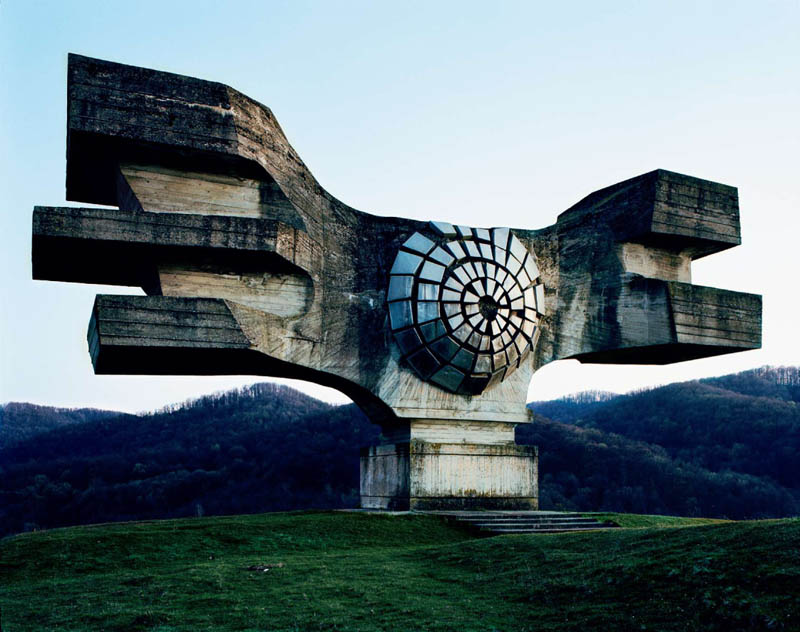
Podgaric – Photograph by Jan Kempenaers
Below you will find an incredible collection of photographs by Jan Kempenaers. All of the images are from his book, simply titled Spomenik. You can find the book for sale through his publisher Roma Publications or on Amazon. Details about these fascinating monuments along with a brief overview of Yugoslavia can also be found below. Enjoy!
2. Kosmaj
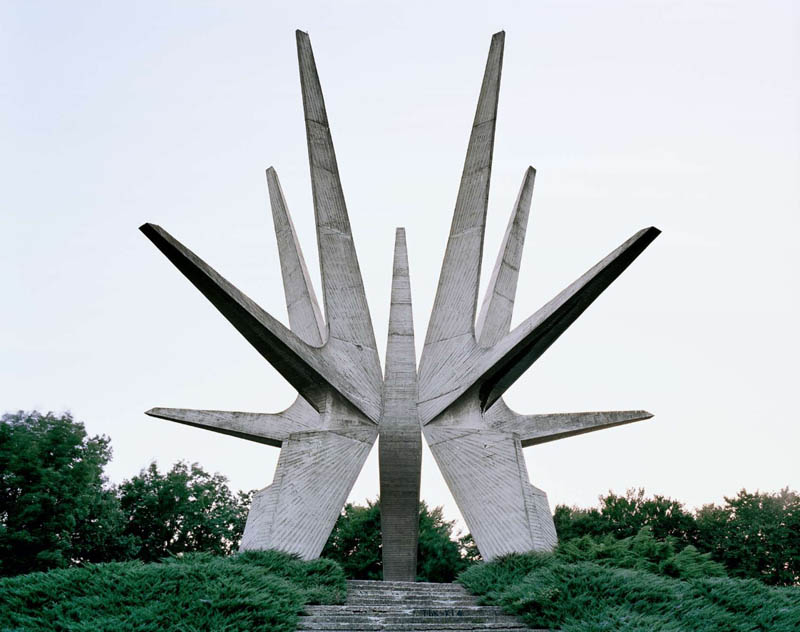
Photograph by Jan Kempenaers
3. Tjentište
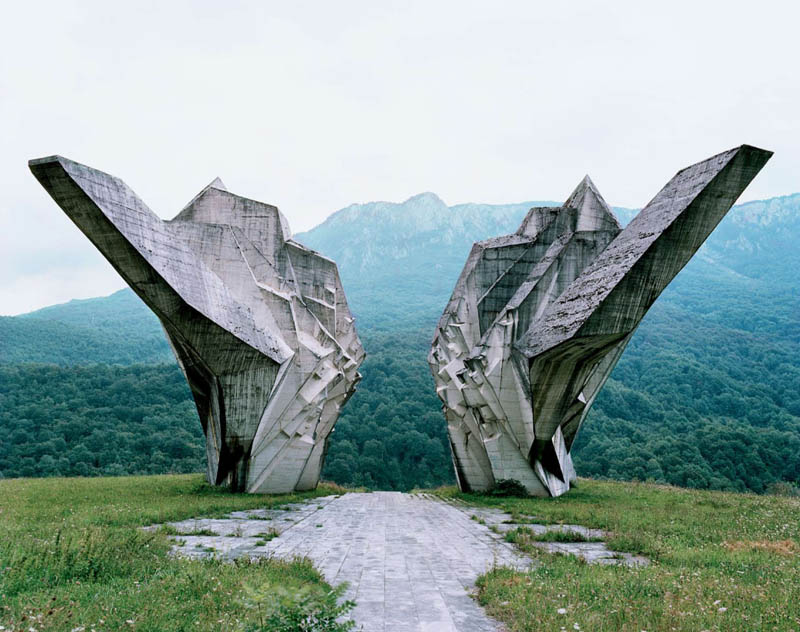
Photograph by Jan Kempenaers
4. Niš
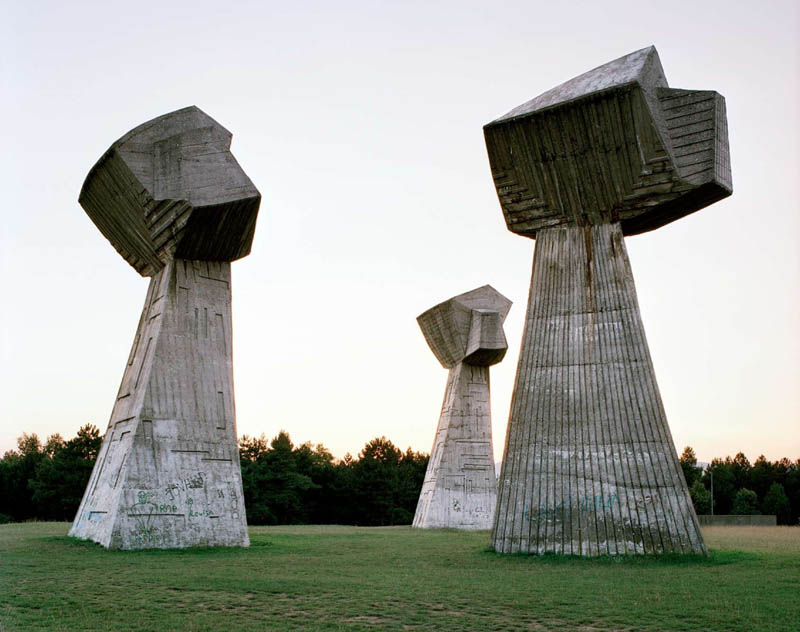
Photograph by Jan Kempenaers
5. Kadinjaca
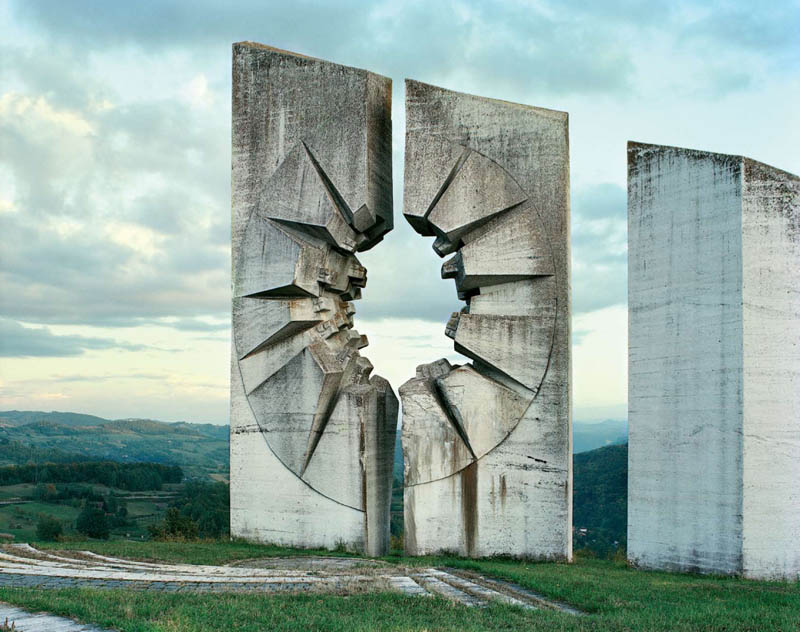
Photograph by Jan Kempenaers
6. Petrova Gora
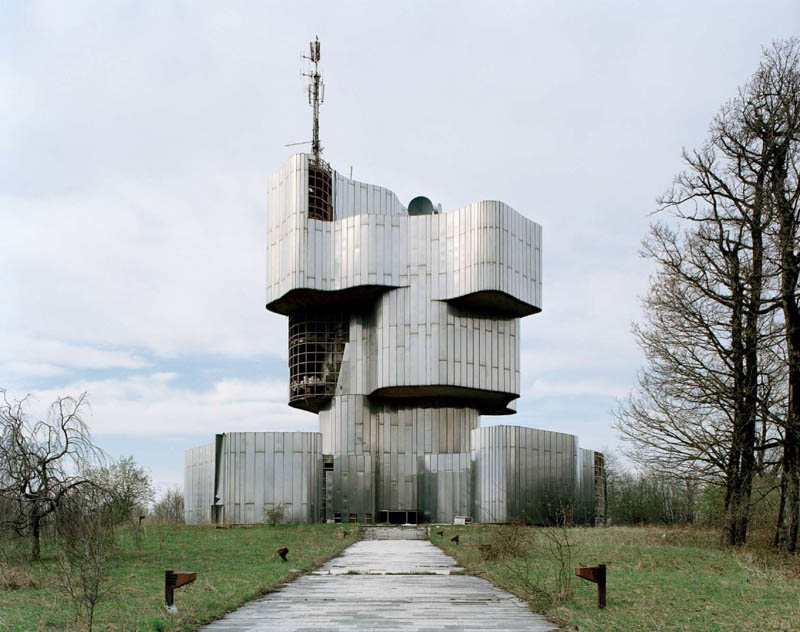
Photograph by Jan Kempenaers
7. Kozara
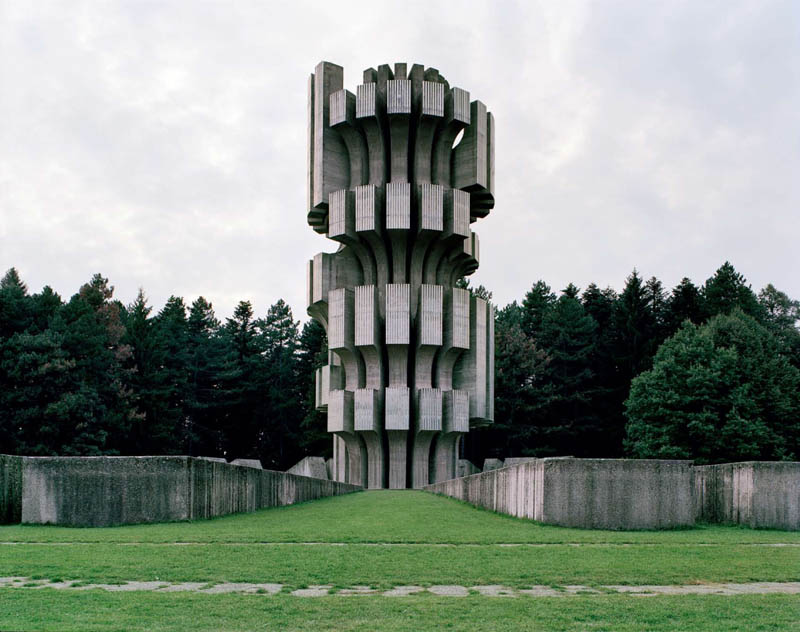
Photograph by Jan Kempenaers
8. Mitrovica
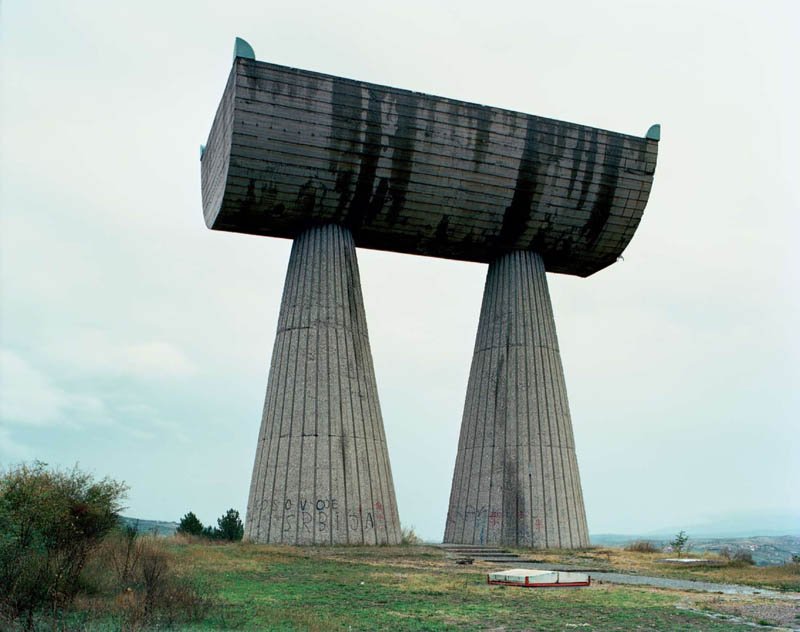
Photograph by Jan Kempenaers
SPOMENIK BY JAN KEMPENAERS
During the 1960s and 70s, thousands of monuments commemorating the Second World War called ‘Spomeniks’ were built throughout the former Yugoslavia; striking monumental sculptures, with an angular geometry echoing the shapes of flowers, crystals, and macro-views of viruses or DNA.In the 1980s the Spomeniks still attracted millions of visitors from the Eastern bloc; today they are largely neglected and unknown, their symbolism lost and unwanted.
Antwerp-based photographer Jan Kempenaers travelled the Balkans photographing these eerie objects, presented in the book Spomenik as a powerful typological series. The beauty and mystery of the isolated, crumbling Spomeniks informs Kempenaer’s enquiry into memory, found beauty, and whether former monuments can function as pure sculpture.
9. Sanski Most
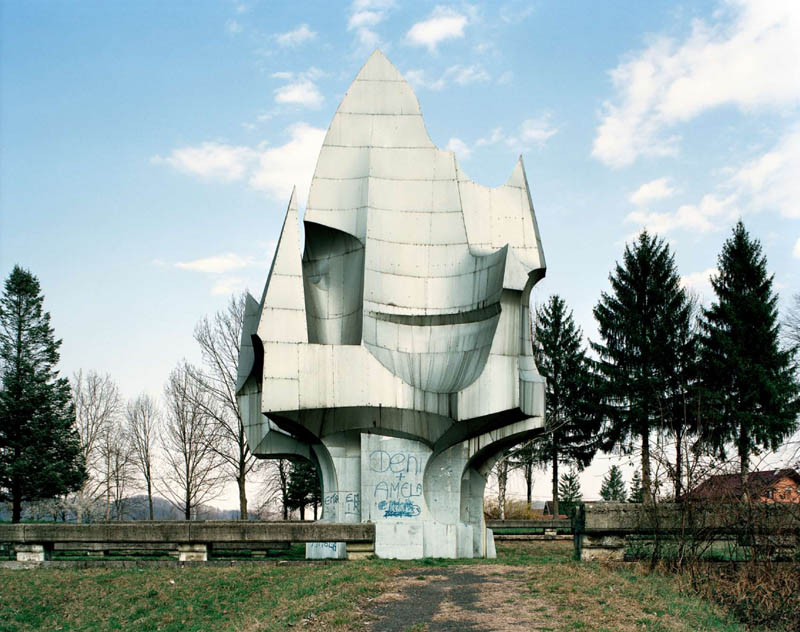
Photograph by Jan Kempenaers
10. Jasenovac
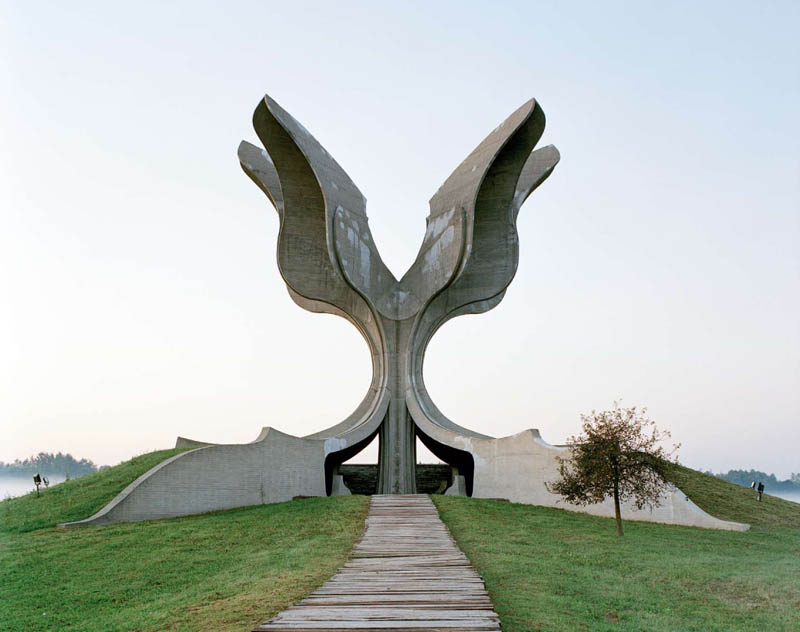
Photograph by Jan Kempenaers
11. Kruševo
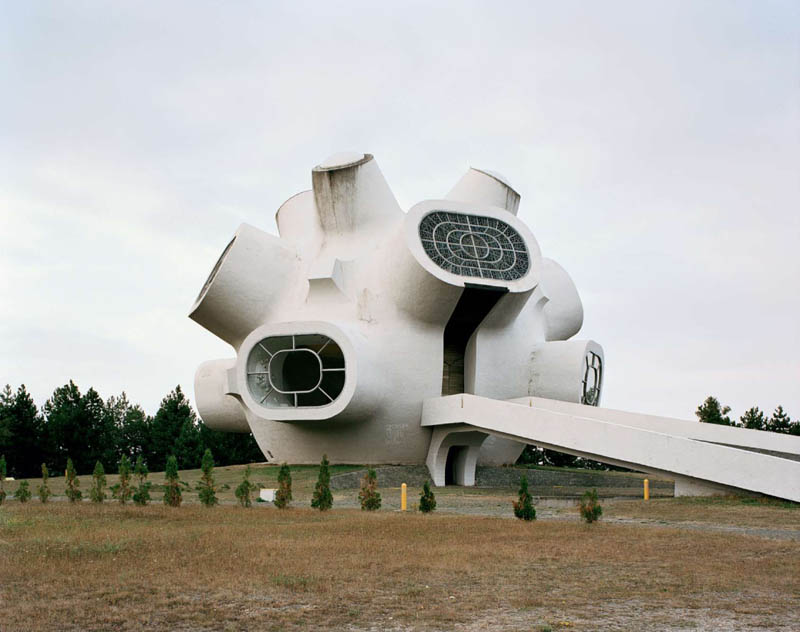
Photograph by Jan Kempenaers
12. Grmec
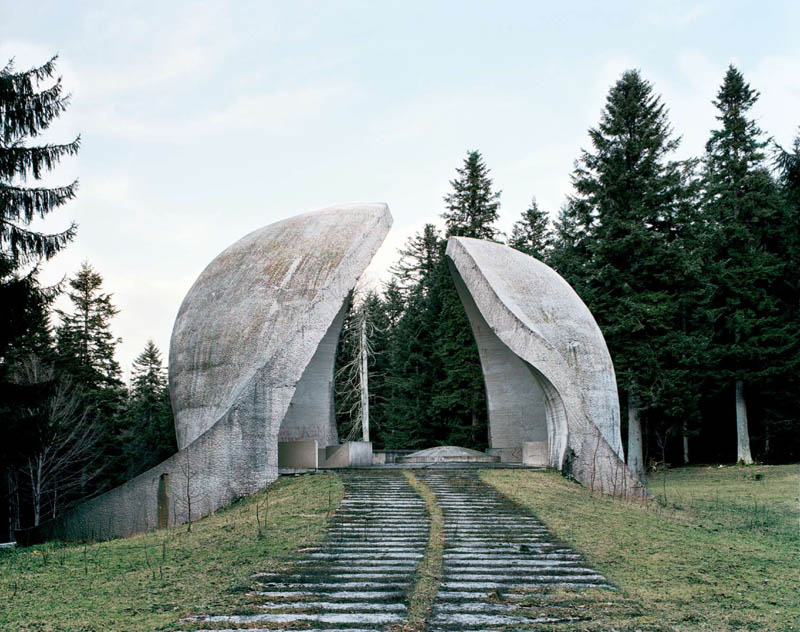
Photograph by Jan Kempenaers
13. Korenica
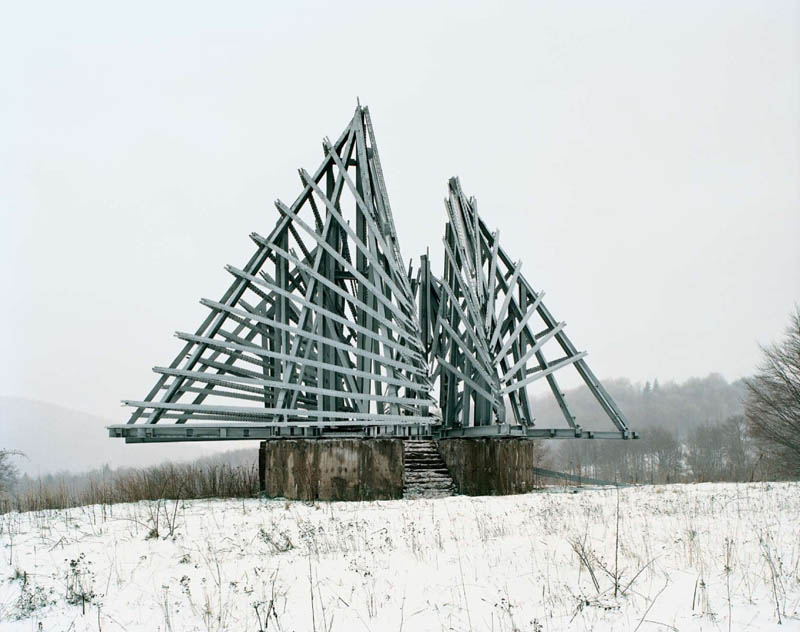
Photograph by Jan Kempenaers
14. Makljen
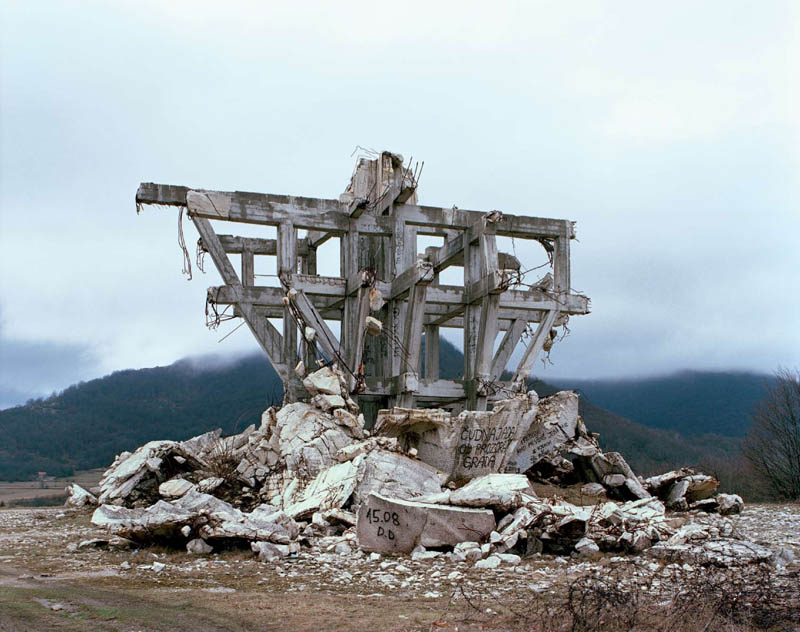
Photograph by Jan Kempenaers
15. Kolašin
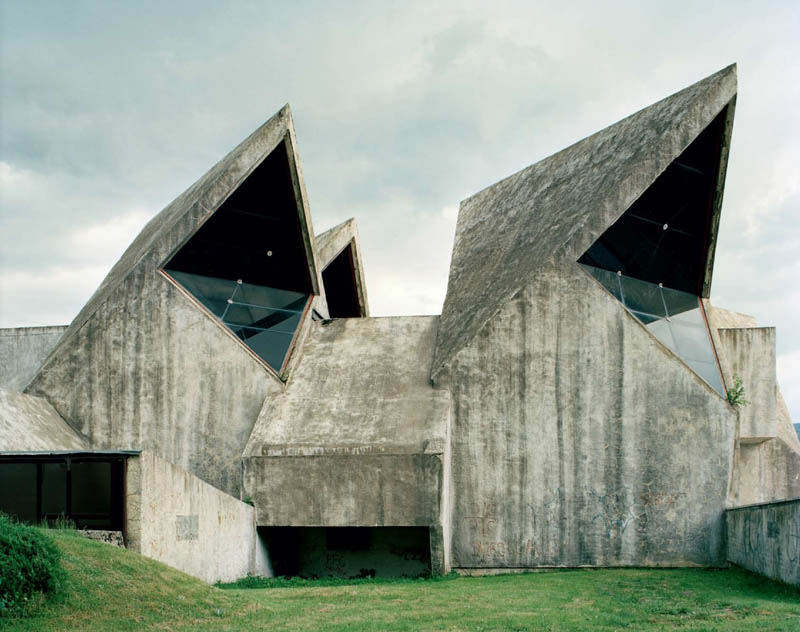
Photograph by Jan Kempenaers
16. Brezovica
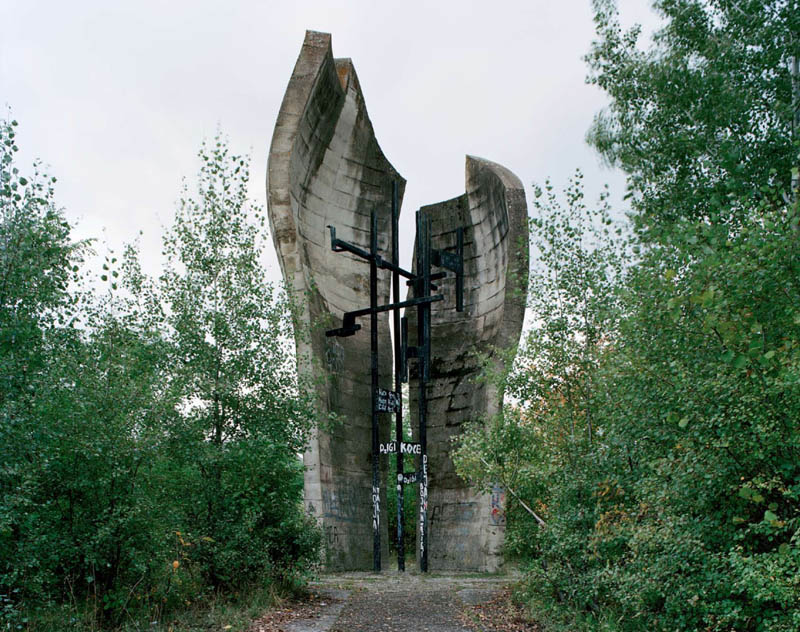
Photograph by Jan Kempenaers
YUGOSLAVIA
Yugoslavia is a term that describes three political entities that existed successively on the western part of the Balkans, during most of the 20th century.The first country to be known by this name was the Kingdom of Yugoslavia, which before 3 October 1929, was known as the Kingdom of Serbs, Croats and Slovenes. It was established on 1 December 1918 by the union of the State of Slovenes, Croats and Serbs and the Kingdom of Serbia (to which the Kingdom of Montenegro was annexed on 13 November 1918, and the Conference of Ambassadors in Paris gave international recognition to the union on 13 July 1922). The Kingdom of Yugoslavia was invaded by the Axis powers in 1941, and because of the events that followed, was officially abolished in 1943 and 1945.
The second country with this name was the Democratic Federal Yugoslavia, proclaimed in 1943 by the Yugoslav Partisans resistance movement during World War II. It was renamed to the Federal People’s Republic of Yugoslavia in 1946, when a communist government was established. In 1963, it was renamed again to the Socialist Federal Republic of Yugoslavia (SFRY). This was the largest Yugoslav state, as Istria, Rijeka and Zadar were added to the new Yugoslavia after the end of World War II.
The constituent six Socialist Republics and two Socialist Autonomous Provinces that made up the country were: SR Bosnia and Herzegovina, SR Croatia, SR Macedonia, SR Montenegro, SR Slovenia and SR Serbia (including the autonomous provinces of Vojvodina and Kosovo which after 1974 were largely equal to the other members of the federation). Starting in 1991, the SFRY disintegrated in the Yugoslav Wars which followed the secession of most of the country’s constituent entities. The next Yugoslavia, known as the Federal Republic of Yugoslavia, existed until 2003, when it was renamed Serbia and Montenegro. [Source: Wikipedia]
17. Ostra
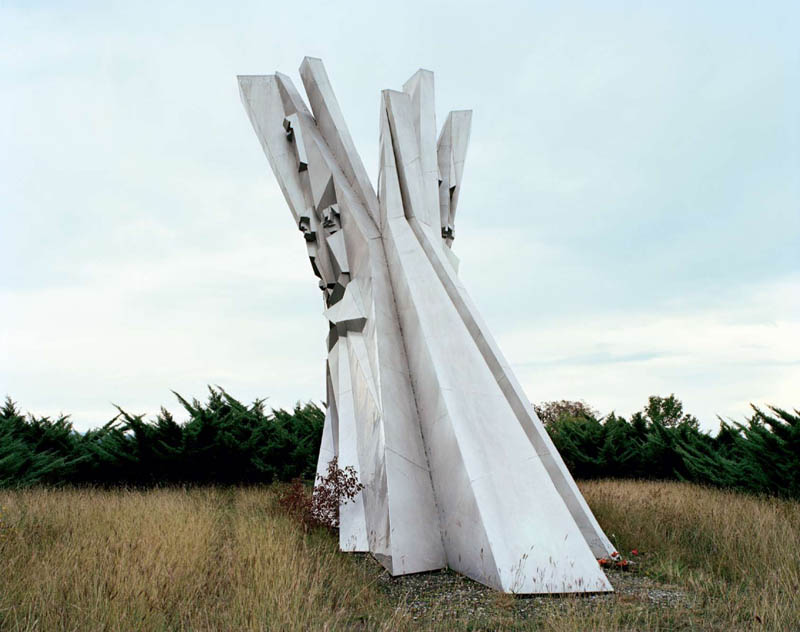
Photograph by Jan Kempenaers
18. Zenica
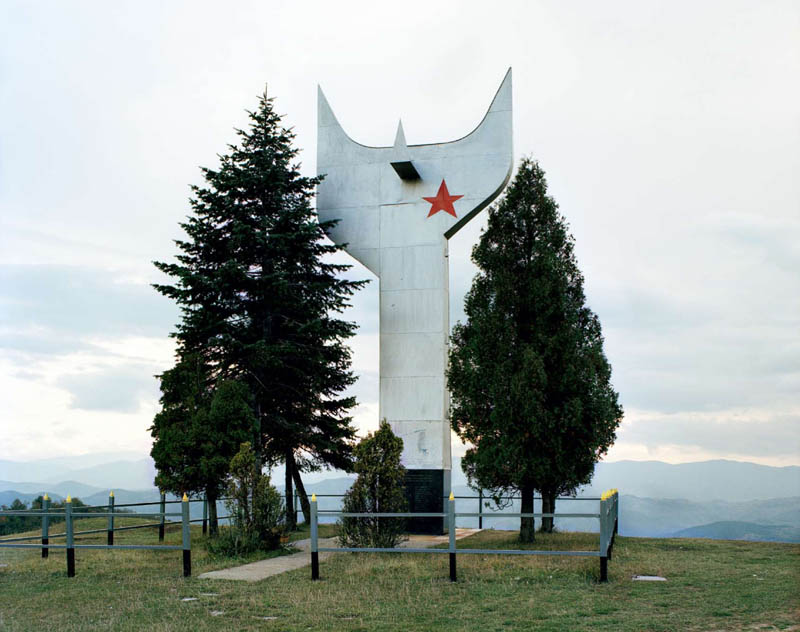
Photograph by Jan Kempenaers
19. Sisak
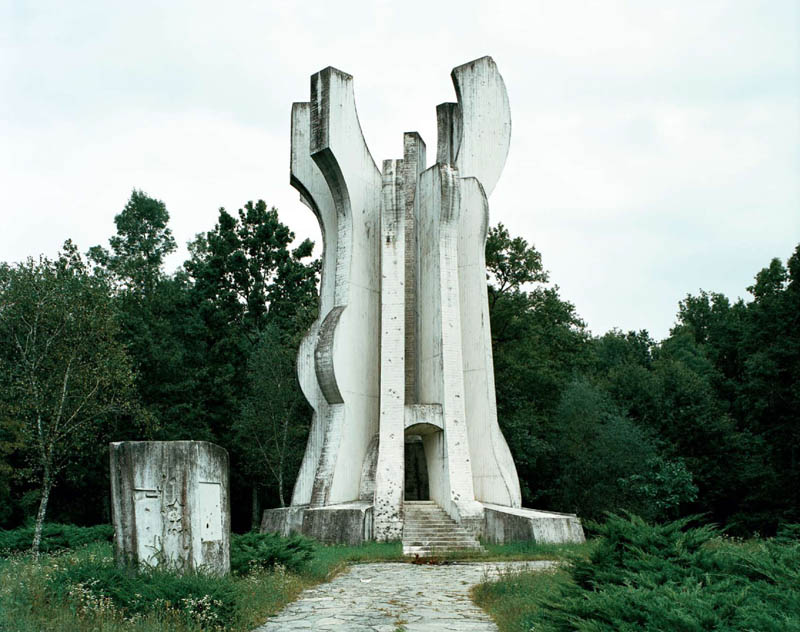
Photograph by Jan Kempenaers
20. Sinj
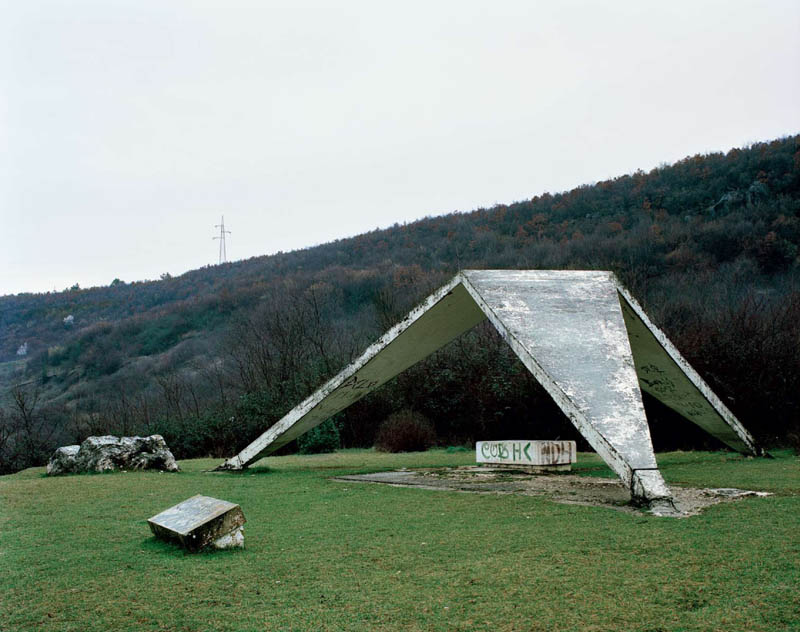
Photograph by Jan Kempenaers
21. Ilirska Bistrica
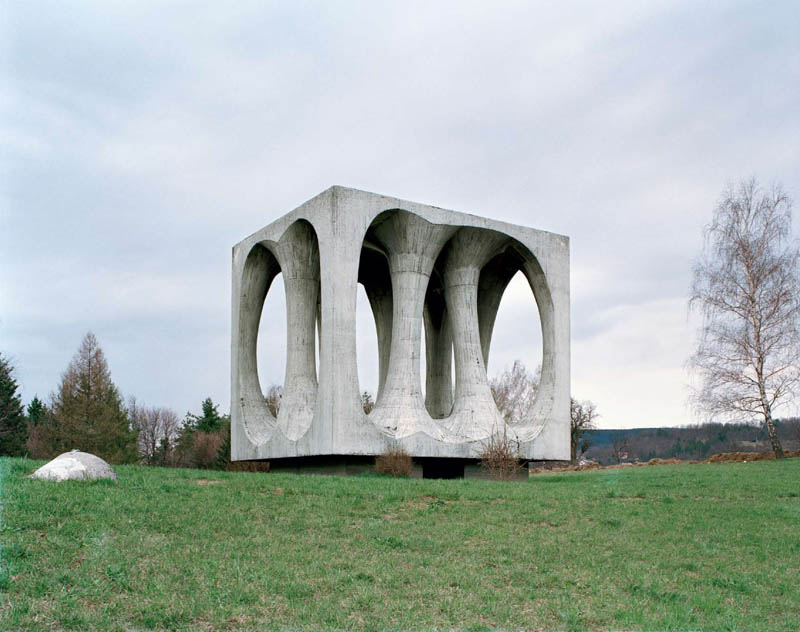
Photograph by Jan Kempenaers
22. Knin
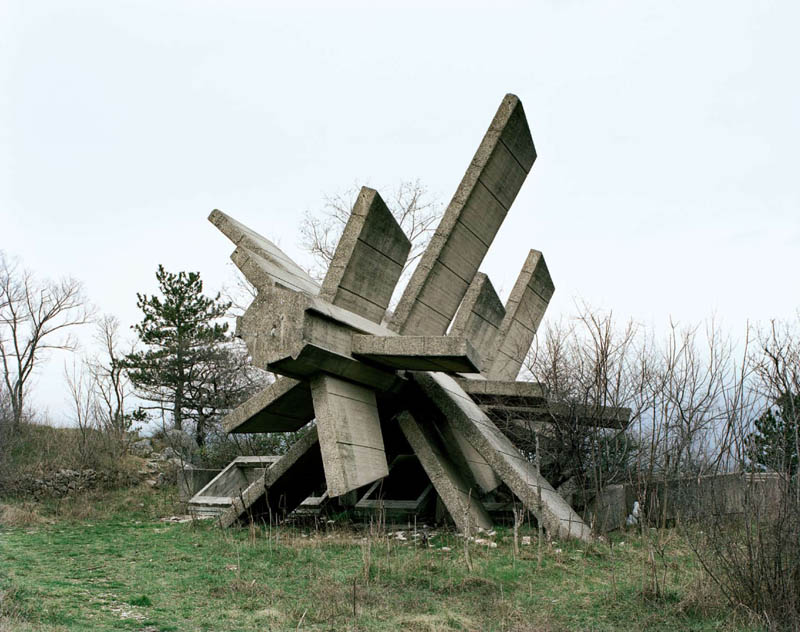
Photograph by Jan Kempenaers
23. Nikšic
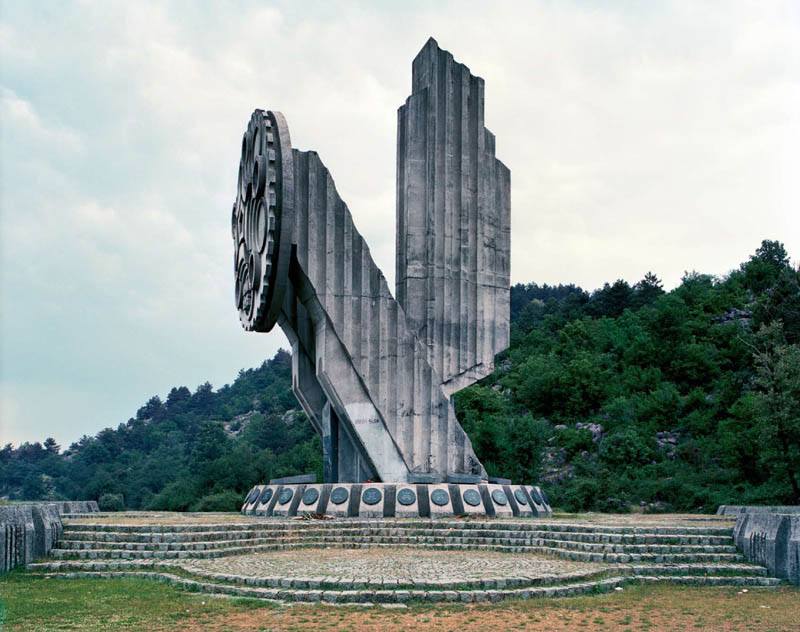
Photograph by Jan Kempenaers
Via TwistedSifter
No comments:
Post a Comment